EYFS Activities - We’ve explored… rain
Annette Rawstrone
Monday, July 24, 2017
Children at one setting have been finding out about the water cycle, including rain. By Annette Rawstrone

The joy of jumping in puddles and sticking your tongue out to catch rain drops is shared by many children, but the children at Morton Mains Nursery in Edinburgh, part of the Bright Horizons group, took it one step further and investigated how the water cycle works. As their interest deepened, they undertook a range of scientific experiments, studied clouds, received a visit from a civil engineer and even raised money for an international development charity.
The children became increasingly interested in rain after reading Once There Was a Raindrop by Judith Anderson. The title explains how falling rain flows into drains and streams and finally into the sea before the sun then heats the water, causing some of it to rise into the atmosphere, where once again it falls as rain or snow.
Nursery manager Karin Duguid explains, ‘The children started to talk about how the water cycle works and we could see that the book had sparked an interest in them. So we gauged what the three- to five-year-olds already knew in order to see what areas to focus on and enhance their learning. One child drew on his knowledge and likened the water cycle to the seasons because it goes again and again.’
She adds, ‘Many of our children are active learners and like to conduct science experiments, which they enjoy repeating, so we researched online a number of experiments that we could do together.’
EVAPORATION, CONDENSATION, PRECIPITATION…
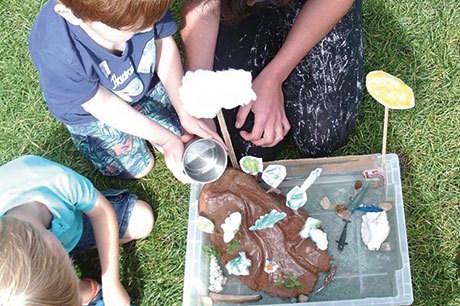 They started by making their own mini water cycle so that children could see the process in action. They sculpted a mountain out of clay and put it in a water tray with moveable clouds and a sun. The children could then pour ‘rain’ onto the mountain. ‘They enjoyed exploring how the water would run off into the water tray and talked about it flowing into rivers, seas and lakes,’ Ms Duguid says. Key words were put by the water tray for the staff and children to use during their investigations, such as ‘evaporation’, ‘condensation’ and ‘precipitation’.
They started by making their own mini water cycle so that children could see the process in action. They sculpted a mountain out of clay and put it in a water tray with moveable clouds and a sun. The children could then pour ‘rain’ onto the mountain. ‘They enjoyed exploring how the water would run off into the water tray and talked about it flowing into rivers, seas and lakes,’ Ms Duguid says. Key words were put by the water tray for the staff and children to use during their investigations, such as ‘evaporation’, ‘condensation’ and ‘precipitation’.
In order to see how evaporation works, the children conducted an experiment with boiled water and salt, which they put into a bowl with string dangling in. As the water cooled it evaporated, causing the water level to reduce and salt crystals to form on the string. Children put rain gauges outside on the nursery window sills and in the gardens and used their numeracy skills to monitor and record how much rain there was – ‘The children would go home at night wondering whether it was going to rain while they were asleep,’ comments Ms Duguid.
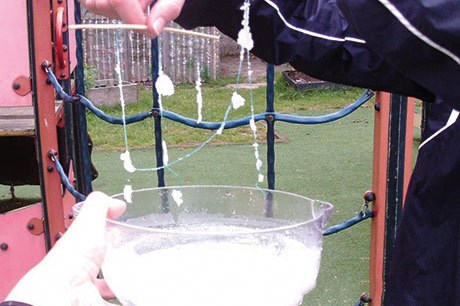
Staff discussed with the children the role of trees and plants in the water cycle and they investigated transpiration – water travelling from the ground through the plant’s roots and then being returned to the air through the leaves. In this exploration, they tied small plastic bags onto the leafy branches of trees and bushes in the nursery garden. Next day, they returned to find that water had gathered in the bags and they measured the collected liquid.
Children broadened their investigations to experiment generally with water. They froze water to see it in a different form and watched it melt, and also did floating and sinking experiments. They enjoyed predicting what different objects and materials – such as paper, metal, wood and stones – would do in water.
‘A sponge was interesting because the children worked out that it floated until it had filled with water and then sank because it was heavy,’ Ms Duguid says. ‘Each time we did a different experiment, we’d ask the children to predict what they thought would happen, and then we’d reflect on what had happened afterwards.’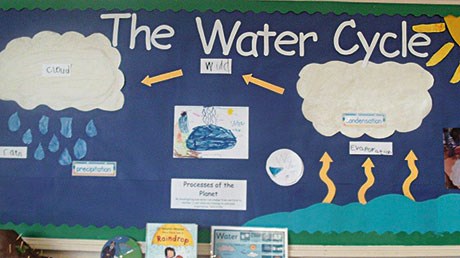
GATHERING, TREATING, USING…
Coincidentally, a nursery parent is a civil engineer with Scottish Water so staff invited her in to the nursery to speak to the children. She read them My Mummy is an Engineerby Kerrine Bryan and showed them a Power Point presentation explaining the water cycle and how Scottish Water gathers and treats water before it goes into people’s homes. She also brought a water cycle card game for the children to play, organising the relevant cards into the correct process.
The visit inspired children to consider what we use water for, such as helping plants to grow for food. They considered how our toilets need water to flush and washing machines use water to clean clothes. It was concluded that water is necessary for life.
‘Our conversations led on to children talking about how some countries do not have lots of water. One child commented that people have to drink dirty water from puddles,’ says Ms Duguid.
These conversations led to them investigating deserts and how plants, such as cacti, store lots of water in their leaves, stems or roots. They also spoke about how they could help people living in countries where there is limited access to clean water supplies, and decided to raise money for the charity WaterAid. Children decorated water bottles and then took them home to fill with loose change to donate to the cause.
The staff and children enjoyed making up their own song to help them to remember the water cycle. They also used their creativity to make mountains and clouds, do water cycle drawings and devise their own books about it.
UP IN THE CLOUDS
There is a forest near the nursery, and the children got their wellies on and went on a sensory walk on a wet day. ‘The children observed rain drops on the leaves and they commented that they could smell the rain,’ says Ms Duguid.
Finding out more about the water cycle meant that the children were keen to discuss the weather each day and took a great interest in looking at the clouds in the sky. Staff printed pictures of different cloud types off the internet so that the children could identify them, such as stratus and cumulus.
They made tick sheets with the different cloud types on and ‘cloud wheels’ that they could spin around and use to help identify the clouds that they saw. Children enjoyed taking these home and sharing their knowledge with their parents.
‘Many of the parents were amazed by what their children were learning. One parent confessed to Googling what their child said because they didn’t believe them,’ Ms Duguid adds. ‘We learn with the children. It’s great when they ask questions because it shows that they’re engaged and we feel it’s important to find out more and give proper answers.’
BOOK CORNER
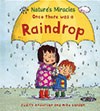 Once There Was a Raindrop by Judith Anderson
Once There Was a Raindrop by Judith Anderson
When the children in her class show an interest in rain, their teacher explains how it is formed.
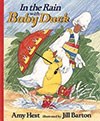 In the Rain with Baby Duck by Jill Barton
In the Rain with Baby Duck by Jill Barton
Baby duck hates the rain. It makes her very cross and cranky. Mother and Father Duck can’t understand it, but Grandpa can. He remembers that Mother Duck was just the same when she was a little girl and gives Baby Duck the beautiful red boots and umbrella that were once Mother Duck’s.
 Rain Brings Frogs by Maryann Cocca-Leffler
Rain Brings Frogs by Maryann Cocca-Leffler
Nate always sees the bright side of life. While others complain about rain, he is happy about the frogs that it brings. Instead of wanting more, he is grateful for what he’s got.
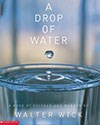 A Drop of Water by Walter Wick
A Drop of Water by Walter Wick
Spectacular photographs on the subject of water – magnified water as ice, rainbow, stream, frost, dew. Count the points of a snowflake, or contemplate how drops of water form clouds.
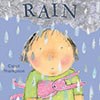 Rain by Carol Thompson
Rain by Carol Thompson
Celebrates the immediate and sensory response of children to the natural world, whatever the weather.
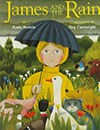 James and the Rain by Karla Kuskin
James and the Rain by Karla Kuskin
This rhyming text tells how James goes walking in the rain and meets with animals for some rainy-day games.
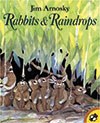
Rabbits and Raindrops by Jim Arnosky
A rabbit family huddles together during a downpour and marvels at the damp, sparking world once the rain has cleared.
 My Mummy is an Engineer by Kerrine Bryan
My Mummy is an Engineer by Kerrine Bryan
Introducing children to the world of engineering by following a mother’s adventure as an engineer, from working with her team in the office to visiting a construction site.
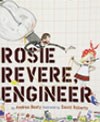 Rosie Revere, Engineer by Andrea Beaty and David Roberts
Rosie Revere, Engineer by Andrea Beaty and David Roberts
Rosie is a brilliant inventor of gizmos and gadgets who dreams of becoming a great engineer, and helping her great aunt to fly.










